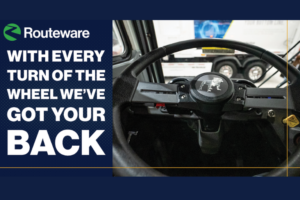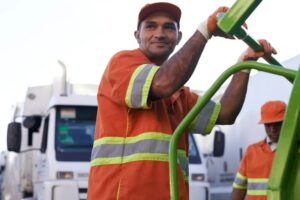From COVID-19-related employee absences and changes to the waste stream, to the ongoing driver shortage and rising fuel costs, challenges for waste and recycling haulers continue to mount.
Yet opportunities, too, are in the offing, as states adopt rules requiring new organics collection programs, and technological advances help make the industry greener and more resilient.
As the old saying goes, luck favors the prepared.
In fact, when the pandemic landed on our collective doorstep 18 months ago, visionary haulers who had already adopted digital solutions for fleet automation and customer education were able to react more quickly and exhibit flexibility under pressure.
Here are 10 ways smart truck technology helps them stay agile in uncertain times.
10. Problem: A large number of people now working from home has increased household waste volumes and reduced business waste. Residential collection trucks are having to visit the landfill more often and this pushes routes over time.
Solution: Rebalancing routes to account for a new normal in waste volumes brings routes back within time and lets haulers keep services running effectively.
9. Problem: Staff absences due to COVID-19 illness and isolation require more “pinch hitting” by unseasoned drivers.
Solution: Turn-by-turn navigation from on-board computers allows newbies to simply follow the bouncing pin.
8. Problem: Newly recruited drivers without institutional memory take time to learn route specifics.
Solution: Smart design creates routes deliverable in practice, not just theory.
7. Problem: Perceptions of hauling as an outdated industry make it hard to recruit younger drivers.
Solution: In-truck tech that operates just like the tools that digital natives use in everyday life makes the job more appealing.
6. Problem: The rising importance of delivery services of all kinds creates more competition for short-haul drivers.
Solution: Smart truck technology saves time and money, allowing haulers to pay better wages and attract and retain top talent.
The Hauler's Guide to Better Online Reviews
Delight customers and make life easier for your staff with intuitive fleet technology that just works.
5. Problem: Driving can be stressful, leading to poor health, which can discourage new recruits.
Solution: Technology that enhances communication and puts more power in the driver’s hands reduces stress and makes the work more enjoyable.
4. Problem: Waste hauling is a dangerous job, which can intimidate potential applicants.
Solution: Digital solutions, including 360-degree truck cameras, enhance safety and save lives.
3. Problem: Historic barriers to recruiting women to help stem the driver shortage may include non-family-friendly scheduling.
Solution: On-board computers and real-time communication with office staff creates better division of labor so everyone gets home on time.
2. Problem: New collection routes, such as required programs for organics, increase the need for drivers and trucks. Yet some programs are currently being cut as resource pressure makes them unviable.
Solution: Service redesign and route optimization frees up resources from existing services (15 percent on average) to support new programs, while ensuring new services routes are both efficient and effective.
1.Problem: Geographically shifting populations are changing service delivery requirements.
Solution: Route balancing tools help right-size routes, leading to greater efficiency and customer satisfaction.





